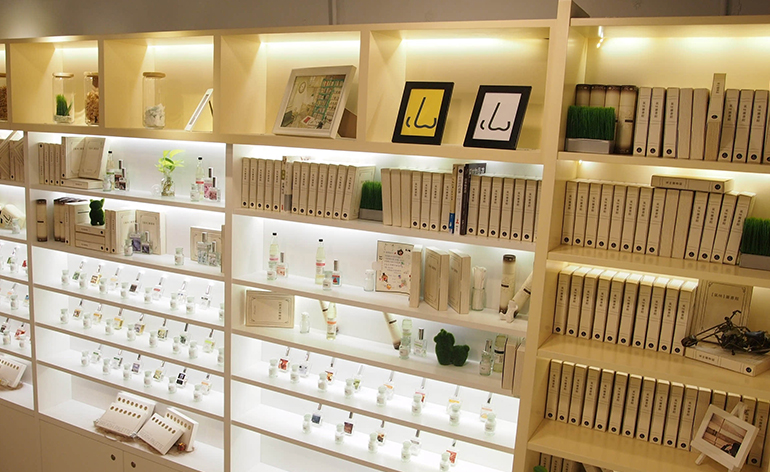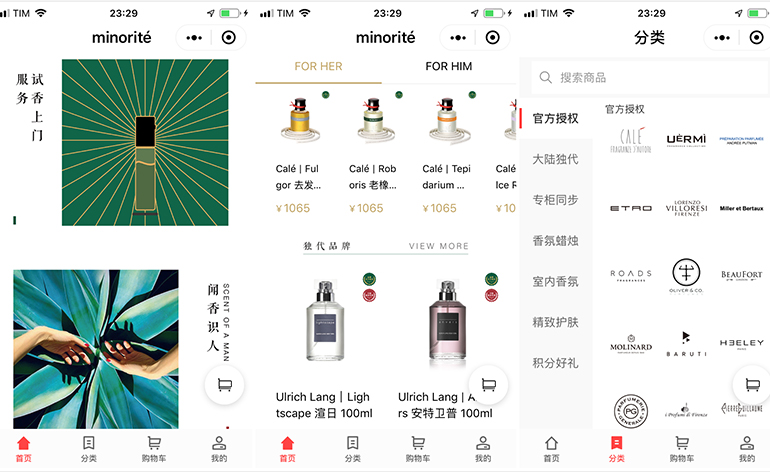
Consumers
Niche Perfumes: China’s Growing Appetite for Unusual Fragrances
by
Jiaqi Luo | February 25, 2019
As Chinese millennials continue to search for ways to express their individualism, scents have become the new frontier.
Throughout the history of modern China, there has been no tradition of using perfume as an essential part one’s daily routine. Representation of perfume in the media was also scarce. Silver screen classics like Al Pacino’s 1992 movie “Scent of a Woman”, and Tom Tykwer’s psychological crime thriller “Perfume” were only introduced to the Chinese audience after the 2000s. So to China’s middle-aged and older generations, the notion of perfume is one that is rather Western, elite, and not very approachable.
According to local research institute Forward, Chinese consumers accounted for only 1% of the global perfume market in 2017. Although the 1% market share may seem dismal compared to the strong Chinese demand exhibited across other consumer categories, it is in fact indicative of a segment with huge untapped potential. Forward’s latest report displays that from 2012 to 2017, the Chinese perfume market has been growing by more than 15% annually – a rate far higher than any other categories in the beauty sector. The report also forecasts the sales volume of China’s perfume industry growing from 25.2 billion RMB (3.7 billion USD) to over 50 billion RMB (7.4 billion USD) by 2023.
Today, many Chinese consumers have since developed the habit of using perfumes and consider it an essential part of their daily routines. When fragrances first started gaining popularity in China back in the 2000s, consumers were most taken by the classics – from Chanel’s No.5 to Yves Saint Laurent’s Black Opium. But a few years ago, a different opinion started emerging from China’s younger, more discerning generation. Fragrances by luxury brands were viewed as too pedestrian and common, with many young consumers referring to them as “街香” (which literally means “street scents”). The traditional marketing method for perfumes – beautiful, glossy ads and endorsements by A-list celebrities – also started coming across as passé to this consumer group.
Interestingly, China’s fragrance consumers have come up with their own vocabulary to distinguish mainstream options from niche ones. The term “商业香”, or commercial scents, refers to perfume from established brands the likes of Chanel, Burberry and Calvin Klein. While its antonym “沙龙香”, which literally translates to “salon perfume”, refers to artisanal perfumes that are exclusively made and produced in small quantities. Chinese shoppers are evolving, and becoming increasingly aware of the distinctive identity and creativity behind a bottle of perfume.
Going Niche
In China’s social media discourse on perfume, there is an oft-heard saying: “宁愿撞衣,不要撞香”, meaning “it is better running into people with the same clothes than running into people with the same scent”. Unlike cosmetics, perfumes stimulate the olfactory sense and are known to trigger emotions and memories. As such, one’s chosen scent becomes intimately intertwined with one’s sense of self. This implication on personal identity comes across even more strongly in China, where young millennials strive to stand out in a population of over 1 billion.
Anyone well-acquainted with the culture of luxury consumption in China would recognise the power of KOLs and celebrity endorsements in driving sales. When buying designer products, or booking luxury vacations, Chinese consumers often conform to the norm to feel like they are part of something. For many of them, buying a bag or lipstick popularised by influencers and social media hype serves as a conversation starter among their peers. But when it comes to purchasing a fragrance, an item that is more about self-expression than anything else, they tend to search for something more complex and unique rather than just a status symbol.
Home Fragrances: Creature Comforts for the Young and Weary
Lighting a scented candle, putting on a silk bathrobe and savouring a glass of wine – while once considered too bourgeoisie and un-Chinese, this has now become a fashionable thing to do in urban China. As China’s millennials joined the workforce in recent years, long hours in the office and general work stress made objects like scented candles and home fragrances grow in popularity for the olfactory comfort they brought to weary consumers.
China’s leading lifestyle brand The Beast spotted this opportunity and developed a successful business selling scents in a different way. Besides bringing in a range of curated home fragrances from big names like Culti, Tom Dixon and Overose, the brand also took care to build its own range of home scents with the help of strategic collaborators. In recent years, it has been leveraging the burgeoning interest of Chinese consumers in art – encouraged in part by the slew of art exhibitions fronted by luxury brands – and working with renowned museums around the world to create special home collections. In 2017, it collaborated with the British Museum to launch a line of scented candles inspired by the museum’s Katsushika Hokusai Collection. The candle’s style, fragrance notes, and background story were seamlessly integrated with Hokusai’s painting. This year, the brand debuted yet another collection with an art institution: The Victoria and Albert Museum in London. Judging from the collection’s success, Chinese shoppers are looking for more than just beautiful scents for the home – but something that appeals to them on a deeper level.

Lifestyle brand The Beast collaborated with The Victoria and Albert Museum in London
on a scented candle collection.
Image: The Beast

The Beast collaborated with The British Museum to launch a scented candle line
inspired by the museum’s Hokusai Collection.
Image: The Beast
Experiential Retail
China’s growing appetite for niche, little-known perfume brands has also given way to innovative retail models. Compared to other cosmetic categories, the fragrance retail sector is still one that relies heavily on storytelling and personalisation.
Scent Library, China’s top fragrance player, created a model that capitalises on the notion of storytelling. The brand’s entire store concept is based on the idea of browsing scents like one would books. Here, customers have the option of buying mini gift sets of 15ml perfumes or booklet-like 3ml perfumes. Each perfume is designed to evoke a memory symbolic to the Chinese life, such as “Boiled Coke with Ginger (a Chinese cold remedy)” and “Plain boiled water (a Chinese family staple).”

Fragrance retailer Scent Library’s store display
Image: 品观网
China’s niche perfume e-commerce platform Minorité, on the other hand, operates on a model that caters to the need for personalisation. Customers will start with an offline aroma preference test, a guided aroma tour, before going online to purchase their desired scent on Minorité’s e-commerce platform.

Minorité’s WeChat e-commerce shop
Image: Minorité
It is safe to say that Chinese consumers today no longer desire to smell like cookie-cutter bottles of designer perfume. Many of them are looking for something a little more personal and complex – be it in the form of their favourite tea, or the scent of freshly cut grass. A 2018 industry report released by Euromonitor International also revealed that China’s demand for niche scents is part of a global trend. In most markets, sales of luxury fragrances have grown much faster than mass brands over the past five years. In response to this, beauty conglomerates like Estee Lauder have ramped up customisation options across its portfolio of brands, as well as welcomed smaller, artisanal perfumeries (including By Killian and Frederic Malle) into its stable of products. While it remains to be seen if this category will continue to grow exponentially as analysts say, it is certainly one to watch.
Join Luxury Society to have more articles like this delivered directly to your inbox
Cover Image: Marie Claire

